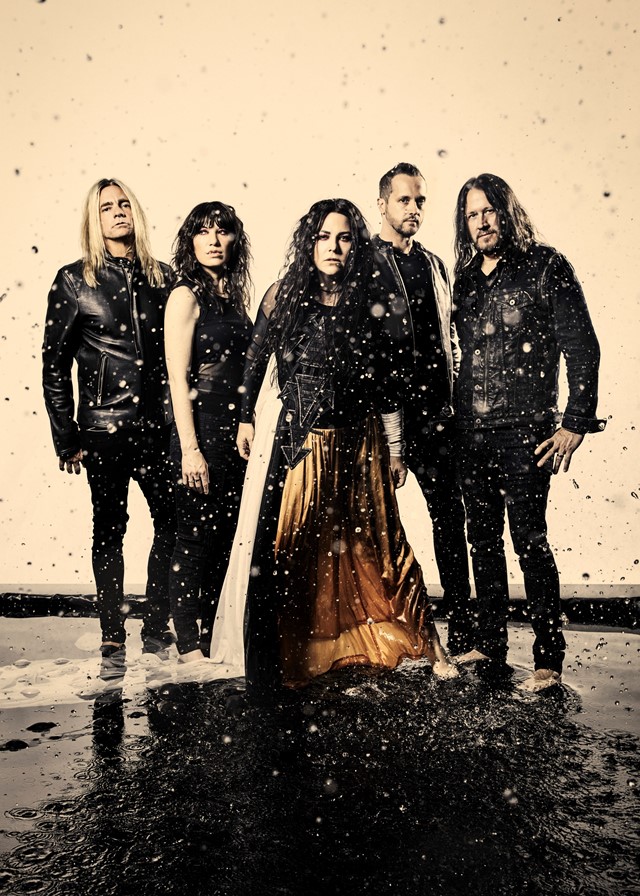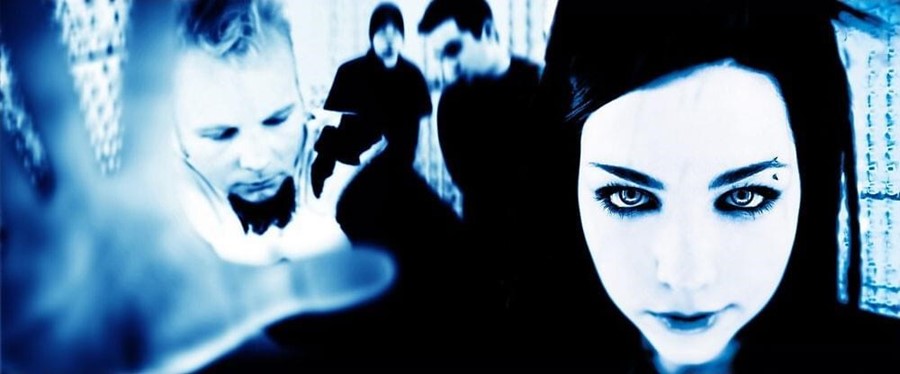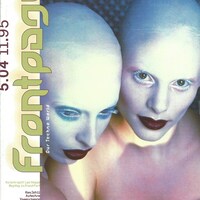Amid an unexpected renaissance for the sad girl ballad, singer Amy Lee tells Dazed the story behind the gothic anthem
On April 7, 2003, a little American rock band called Evanescence dropped their debut single, “Bring Me to Life”, to unexpected global acclaim. Today, the accompanying music video – which sees lead singer Amy Lee scale a dystopian city block – has amassed over one billion views on YouTube, and has firmly earned its place in the nu-metal history books.
That doesn’t explain why we’re seeing “Bring Me to Life” shoot back to the top of the iTunes charts in 2022, though. And yet, last week the rock-rap anthem did just that, with Evanescence tweeting: “19 years and still going strong! Bring Me To Life is #1 on iTunes. Thank you for the love!”
What caused this resurgence in the song’s popularity? Fans of the band and disgruntled BLACKPINK stans (the K-pop group is currently at number two) seem equally perplexed. It could have something to do with the fact that Evanescence are currently on a co-headline tour of the US with fellow nu-metal throwbacks Korn. The more likely story, though, is that “Bring Me to Life” has been quite literally resurrected by the mystical necromancy of the TikTok algorithm, after being mashed up with the Stranger Things fan song “Chrissy Wake Up” in more than 17,000 TikToks.
Like “Running Up That Hill” before it, though, “Bring Me to Life” wouldn’t have reemerged if it wasn’t a certified classic to begin with. This leads us to our next point: where did “Bring Me to Life” come from in the first place – how did Evanescence come up with such a banger? Luckily for us, Lee has taken a break from her current tour to offer some insight into the making and meaning of the song.
“I was really just starting to find my voice lyrically when we were making Fallen, starting to see how the more honest I was, the more powerful I felt,” Lee tells Dazed from the road. “Bring Me to Life”, she says, was influenced by this period of transition, expressing “true desires, unspoken frustrations and fears, standing up to the bullshit around me [that] I was just on the cusp of being able to defeat”.
Lee also reveals some more specific inspirations for “Bring Me to Life” – namely, her now-husband Josh Hartzler. “I was in an abusive relationship when I met [Josh] for like the second time,” she says, “and thought myself to be pretty good at hiding it and faking happy.” When she was briefly left alone with Hartzler in a restaurant while their friends parked the car, however, Lee says he looked into her eyes and asked, “Are you happy?”
“He just seemed to see right through me,” she explains. “It was like he was the only one who did and it affected me… the exposure was a shock but it felt good. He was an unknowing part of my emancipation.” Hence, the opening lyrics of “Bring Me to Life”: “How can you see into my eyes like open doors? / Leading you down into my core / Where I’ve become so numb.”
“The song was initially about him,” Lee confirms. “But in a broader way about breaking free from something I knew I had the power to if I was brave enough.”
"Bring Me to Life" by @Evanescence has reached #1 on US iTunes, over 19 years after release. pic.twitter.com/S62YOF5UTi
— Pop Crave (@PopCrave) August 22, 2022
At 21, the massive and unexpected success of the single – which charted at number one in the UK, US, Australia, and several other countries, selling millions of copies – came as a surprise for Evanescence. “We went from playing clubs to arenas in a matter of months,” says Lee. “People in other countries were listening to it. We were suddenly nominated for multiple Grammys. It was a huge deal.”
As with many artists that achieve sudden success, this came with high highs and low lows, including tensions within the band that would lead to Moody’s departure later in 2003. “There was a lot going on and I had to fight to keep my head held up sometimes, but we made it,” Lee says. “And it paved the way for 20 more years of something more amazing and life-giving than I could ever have dreamed of.”
On the topic of the Evanescence lineup, the band also fought their record label while producing “Bring Me to Life”, as executives pushed for a full-time male co-vocalist, suggesting that there wouldn’t be a big enough audience for a female-fronted band. Eventually, they landed on a compromise, in the form of guest vocalist Paul McCoy of 12 Stones (AKA the guy who yells: “WAKE ME UP!”).
“Adding the rap wasn’t what I wanted, but I did get to write it, and it didn’t ruin us like I was worried about,” says Lee. “Thank God we had more songs to follow up with and clarify who we were. Getting there took time and struggle and determination.”

The lineup tweaks weren’t the only difficult part of recording “Bring Me to Life”. “There was always something special about that song, it resonated with people,” Lee says, which led the label to put particular pressure on its production. In the end, the band ended up making around 10 demos, switching synths for the iconic opening piano part, and adding real strings by David Campbell (“an expense I fought hard for over a less expensive synthetic alternative,” Lee explains).
An orchestral reimagining of the song that is included on the band’s fourth studio album, Synthesis has allowed Evanescence to further align the track with their original artistic vision. And yes, that does include removing the rap. How does Lee feel about the song today, after all these years? “In a lot of ways, it means more to me now,” she says. “Now it’s part of the soundtrack to years of my life. Love, loss, freedom, first experiences, the stories of people around the world and something we’ve all shared together. I’m forever grateful.”
Evanescence are set to hit UK arenas as part of their European tour this November, playing shows in London, Birmingham, Glasgow, and Leeds. View full tour dates here.




